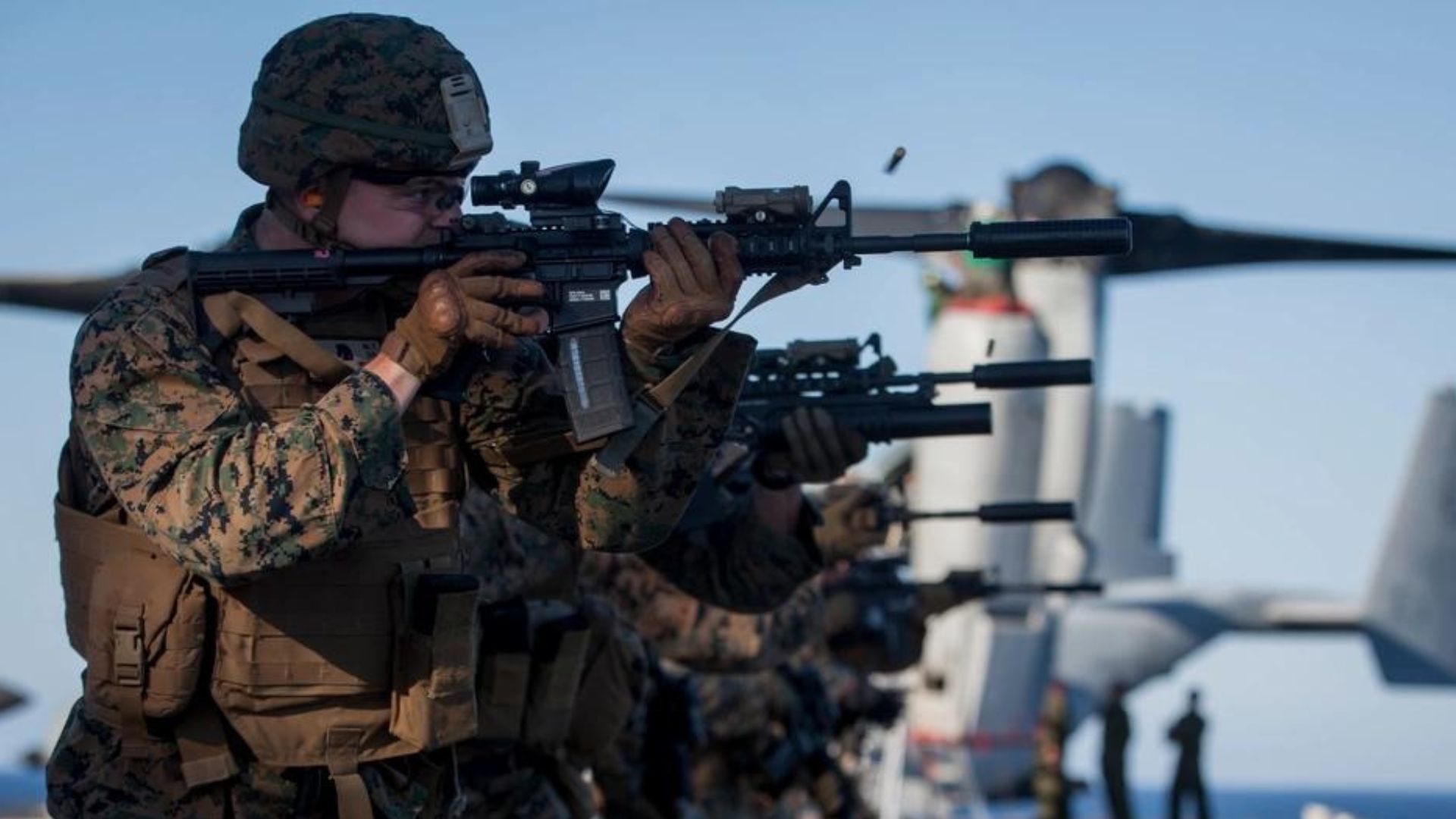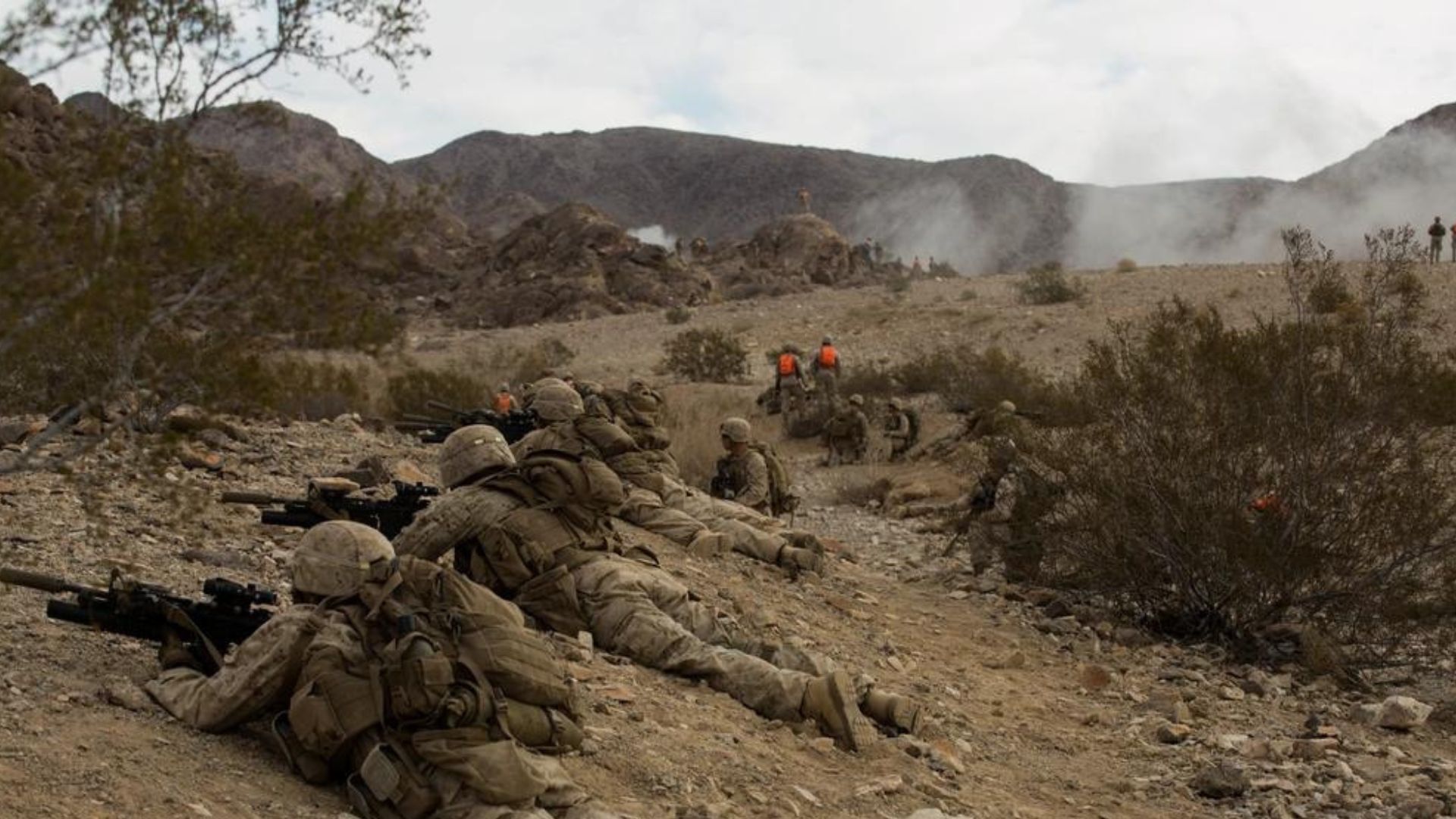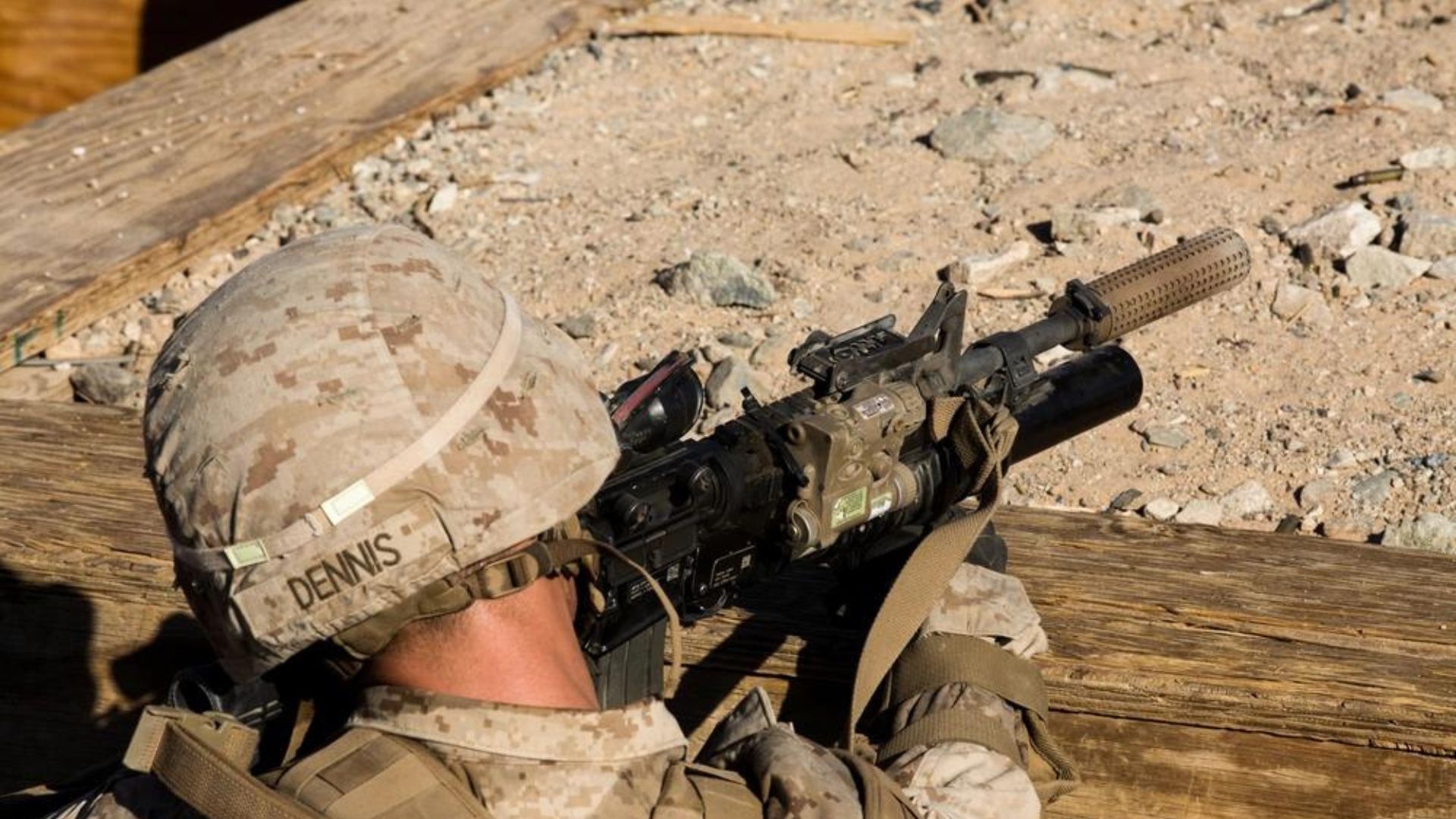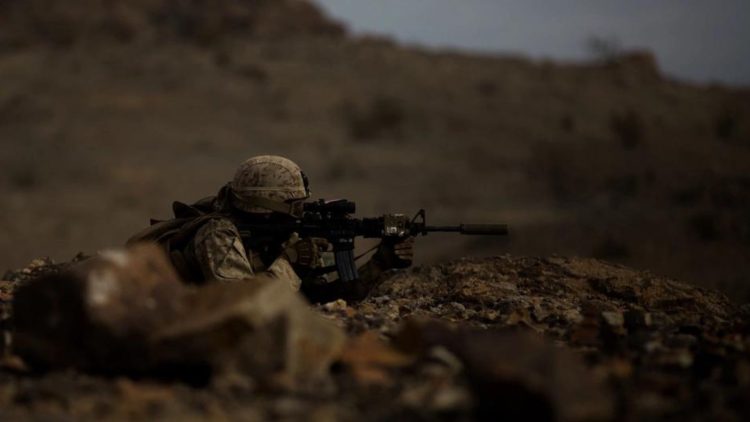Suppressors, once the realm of covert operations and special forces, are poised to revolutionize modern military combat strategies.
By significantly reducing the noise and muzzle flash of gunfire, these devices enhance stealth, improve communication, and protect soldiers’ hearing in the heat of battle. As the Army and Marine Corps test and refine suppressor technology, the potential for widespread adoption grows.
This article explores the profound impact suppressors could have on future military engagements, examining their benefits, challenges, and tactical advantages in an increasingly sophisticated battlespace. The future of warfare may hinge on the quiet, unseen power of suppression.
Historical Context
Suppressors, invented by Hiram Percy Maxim in the early 1900s, saw use in World War II and Vietnam. Today, snipers and special operations forces routinely use them.

The Marine Corps has fielded suppressors with various units, aiming for a distinct battlefield advantage. Historically, suppressors have been valuable tools in covert operations.
During World War II, for example, the Office of Strategic Services (OSS), a precursor to the CIA, used suppressed firearms for clandestine missions. In Vietnam, special operations forces utilized suppressors to conduct ambushes and eliminate targets without alerting nearby enemy forces. This legacy continues as modern military units seek to adopt and improve upon these tools.
Embracing Suppressor Technology
Suppressors aren’t the silencers seen in movies. They reduce the noise and muzzle flash of gunfire but don’t eliminate it, making it easier for troops to communicate during firefights.
Retired Army Command Sergeant Major Matt Walker, now at the Army’s Maneuver Center of Excellence, explains how suppressors improve training and combat communication. Trainers no longer need to shout over gunfire, making instruction more effective.
Marines in Norway have noted similar benefits. Chief Warrant Officer 5 Christian Wade, who is leading suppressor experiments, reports improved communication and coordination during live-fire events. Since 2016, Wade has tested suppressors on M4 carbines and M27 Infantry Automatic Rifles. Now, units like Lima Company and Bravo Company are equipped with fully suppressed rifles.
Suppressors offer more than just noise reduction. They also minimize the muzzle flash that can give away a soldier’s position, especially at night. In combat situations, this stealth capability can mean the difference between life and death. By keeping soldiers hidden from the enemy’s view, suppressors increase their chances of survival and mission success.
Advanced Suppressor Units
Wade’s “Übersquad” in Bravo Company is outfitted with the latest technology, including suppressors, advanced hearing protection, next-gen night vision goggles, updated communication systems, and M320 grenade launchers. The goal is to equip each Marine with a suppressed M27, enhancing their stealth and effectiveness.

These advanced units speak to the military’s commitment to leveraging technology for tactical superiority. The integration of suppressors with other cutting-edge gear ensures that soldiers are prepared for a wide range of combat scenarios.
Night vision goggles, for instance, combined with suppressors, make these units formidable during nocturnal operations, allowing them to see and strike without being detected.
Practical Considerations
Suppressors have evolved, but challenges remain. They add weight and length to weapons, and their service life can be limited. Wade uses the Knight’s Armament QDSS NT4 suppressor, but newer “flow-through” technology promises to reduce fouling and extend service life. Wade emphasizes that thorough testing is essential to validate these claims.
Another significant consideration is the cost. High-quality suppressors can be expensive, and outfitting entire units requires substantial investment.
Additionally, suppressors need regular maintenance to ensure optimal performance. They can accumulate carbon build-up, which can affect the weapon’s accuracy and reliability. The military is continuously working on solutions to mitigate these issues, such as developing easier-to-maintain suppressor designs and improving cleaning protocols.
Enhancing Soldier Performance
Suppressors help soldiers focus by reducing noise and recoil. Marines report improved accuracy and easier weapon handling.
Testing continues with machine guns, with the aim of integrating suppressors into standard military gear. Suppressed weapons can change combat dynamics, offering stealth advantages, especially against poorly equipped insurgents.
Suppressors also play a crucial role in protecting soldiers’ hearing. In the heat of battle, the sound of gunfire can be literally deafening, leading to long-term hearing damage. Suppressors mitigate this risk, allowing soldiers to preserve their hearing while maintaining combat effectiveness. This is particularly important for maintaining communication in the field, as soldiers rely on verbal cues and commands to coordinate their actions.
Future of Suppression Technology
The Army has tested suppressors since 2006, finding both benefits and drawbacks. Suppressed carbines and rifles are proven, but machine gun suppression is new territory.
Engineers at Picatinny Arsenal are developing suppressors for 7.62 mm machine guns, gathering data for future decisions. The future of suppression technology looks promising.
Advances in materials science and engineering are leading to lighter, more durable suppressors. Innovations such as 3D-printed suppressors are being explored, potentially offering customizable solutions tailored to specific weapons and missions. As these technologies mature, they will likely become integral components of the military’s standard-issue equipment.
Battlefield Advantage
Suppressors are not a new technology. The first commercially manufactured suppressor was made in the early 1900s by Hiram Percy Maxim, son of the inventor of the first practical, fully-automatic machine gun. Maxim also invented the car exhaust muffler.

The Office of Strategic Services, a predecessor to the CIA, used suppressors on pistols for covert operations. Snipers for various militaries used suppressors during World War II. During the Vietnam War, some U.S. troops used suppressors with success in firefights, said retired Army Maj. Gen. Robert Scales, author of “Scales on War: The Future of America’s Military at Risk.”
Snipers and special operations personnel have used suppressors for decades. More recently, the Marines’ 2nd Reconnaissance Battalion, 2nd Light Armored Reconnaissance Battalion, and some line platoons with combat engineer units have fielded suppressors, Wade, a former scout sniper, said.
The suppressor’s design is relatively simple, but the Army and Marine Corps hope it will give ground-pounding soldiers and Marines a distinct battlefield advantage.
Here is why suppressors work: Scales said a century’s worth of ground combat study shows that the principal target acquisition, whether it’s counter-sniper or repelling an ambush, is sound.
“There are virtually no instances where an ambushed unit actually sees the enemy,” Scales, a Vietnam War veteran, said. “Both sides shoot at flashes and sounds.”
Most firefights occur at night when visibility is limited. If a soldier’s weapon is quieter than the enemy’s and doesn’t produce a visible muzzle flash, the soldier gains a significant tactical advantage. This is especially true when facing insurgents or poorly equipped foes who rely on sound and flash to locate targets.
Performance Concerns
Experts said that in the past, suppressors’ drawbacks included extra weight and length on a weapon, the suppressor’s limited service life, and concerns about reducing accuracy and range.
Yet newer technologies have reduced the weight, and changes to weapon design and barrel length have mitigated some of the concerns, Scales said. Some suppressors, depending on the weapon and caliber it is paired with, weigh less than two pounds and measure six inches with less than a two-inch diameter.
Some concerns persist, especially the increased maintenance and the service life of suppressors. With current suppressors costing about $700 each, getting more rounds and years out of them is crucial at a time of tight military budgets.
Real-World Testing
To address concerns among infantry Marines, Wade recently produced a three-minute video posted on YouTube titled “Gunner Fact or Fiction.” The video shows Wade firing a suppressed and unsuppressed M4 through a device measuring the speed of the round.
Wade said in the video that he had received questions from Marines who were worried that a suppressor would reduce accuracy and speed. The video displays the speed of the rounds in both configurations and, on average, the suppressed weapon’s rounds were faster than the unsuppressed.
The gunner stressed that only the use of subsonic ammunition, lower-powered ammo that is quieter when paired with a suppressor, would reduce penetration or lethality.
Marines firing the suppressed weapons are using normal, supersonic ammunition and still achieving sound suppression, Wade said.
Machine Guns
Walker said the Army has been testing suppressors at the squad level since 2006. They’ve concluded that suppressed weapons have some benefits and drawbacks.
The benefits of suppression for individual carbines and semi-automatic rifles have been proven, he said. But the new territory, both in the equipment and tactics, is suppressing machine guns.
Crew-served weapons managers and engineers at Picatinny Arsenal in New Jersey solicited vendors for machine gun suppressors for 7.62 mm weapons this year and are currently testing submissions.
The Army is considering equipping combat arms soldiers with suppressors, which could change the way they fight.
The Army’s Research, Development, and Engineering Center also has come up with suppressor designs for machine guns in the past year and a half, said Tom Walsh, product manager engineer for crew-served weapons.
These items and data being gathered by Wade are feeding into the larger Joint Service Small Arms Program, which will help top leaders determine the future of small arms for each of the military branches, officials said.
Walsh said the engineers with ARDEC and Picatinny have worked on suppressors for rifles, carbines, and pistols for decades. But machine guns have only entered the mix over the past five years.
The Army’s interest in the future of weapons suppression is hard to ignore. Recent Army solicitations and projects such as the Modular Handgun System, an off-the-shelf 5.56 mm rifle to replace the Squad Automatic Weapon, and a new.338 Lapua Magnum machine guns all have built-in requirements that the weapons be both sound and flash suppressible.
Conclusion
Suppressors offer clear advantages in modern warfare. They enhance communication, protect hearing, and provide tactical stealth. While challenges persist, ongoing testing and development aim to integrate suppressors across various weapon systems. The future of combat may well depend on these advancements, ensuring soldiers and Marines maintain an edge on the battlefield.
__
Disclaimer: SOFREP utilizes AI for image generation and article research. Occasionally, it’s like handing a chimpanzee the keys to your liquor cabinet. It’s not always perfect and if a mistake is made, we own up to it full stop. In a world where information comes at us in tidal waves, it is an important tool that helps us sift through the brass for live rounds.









